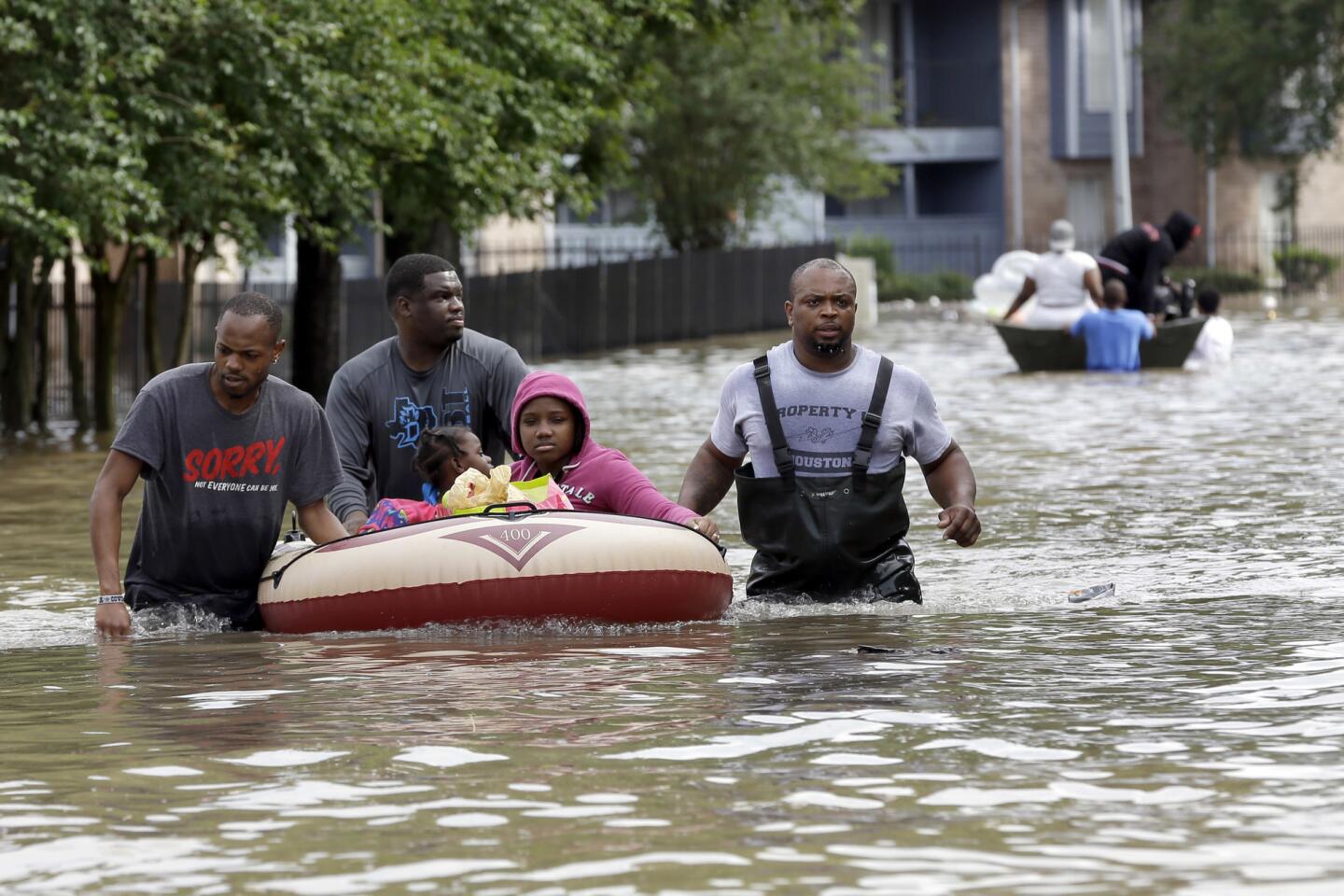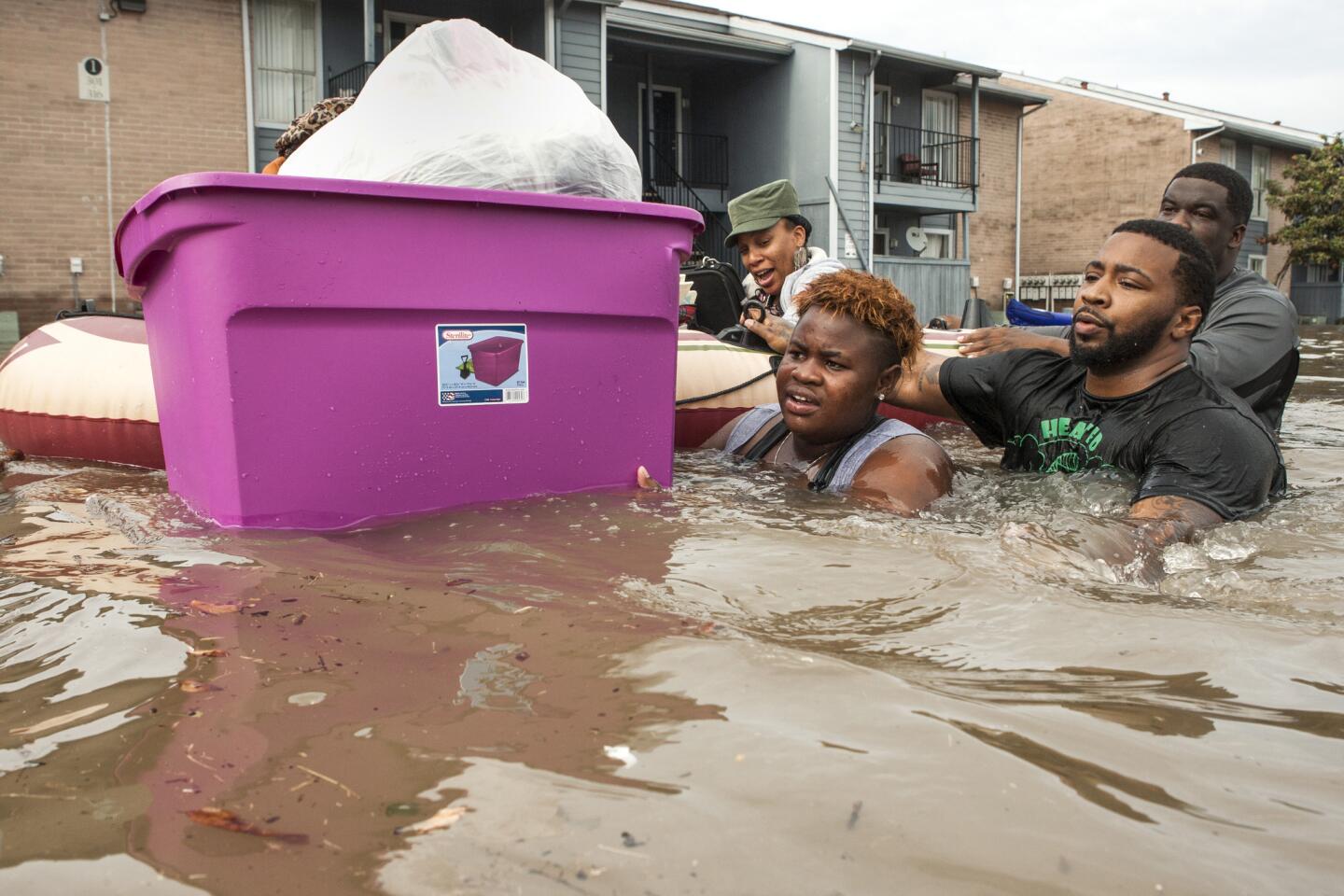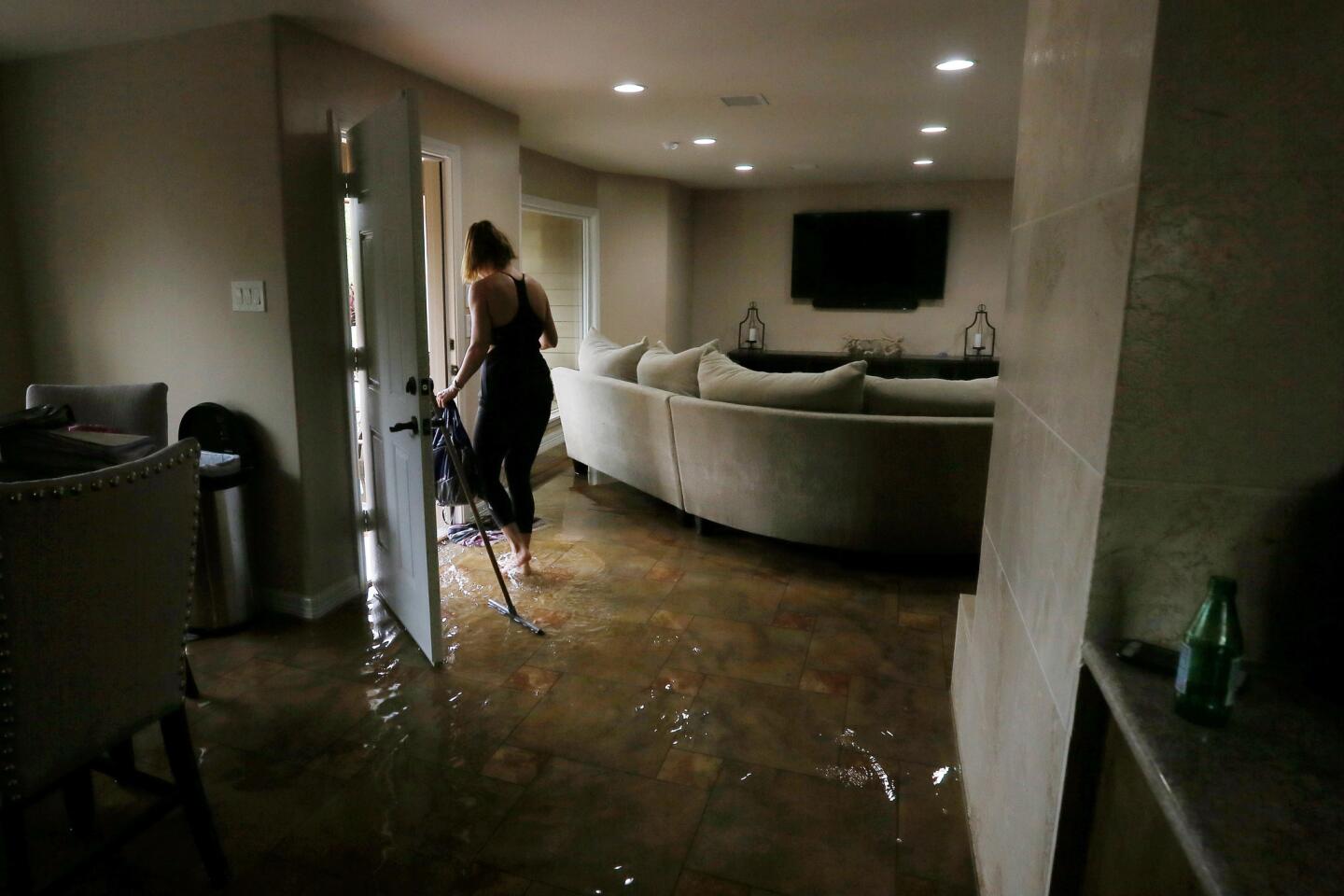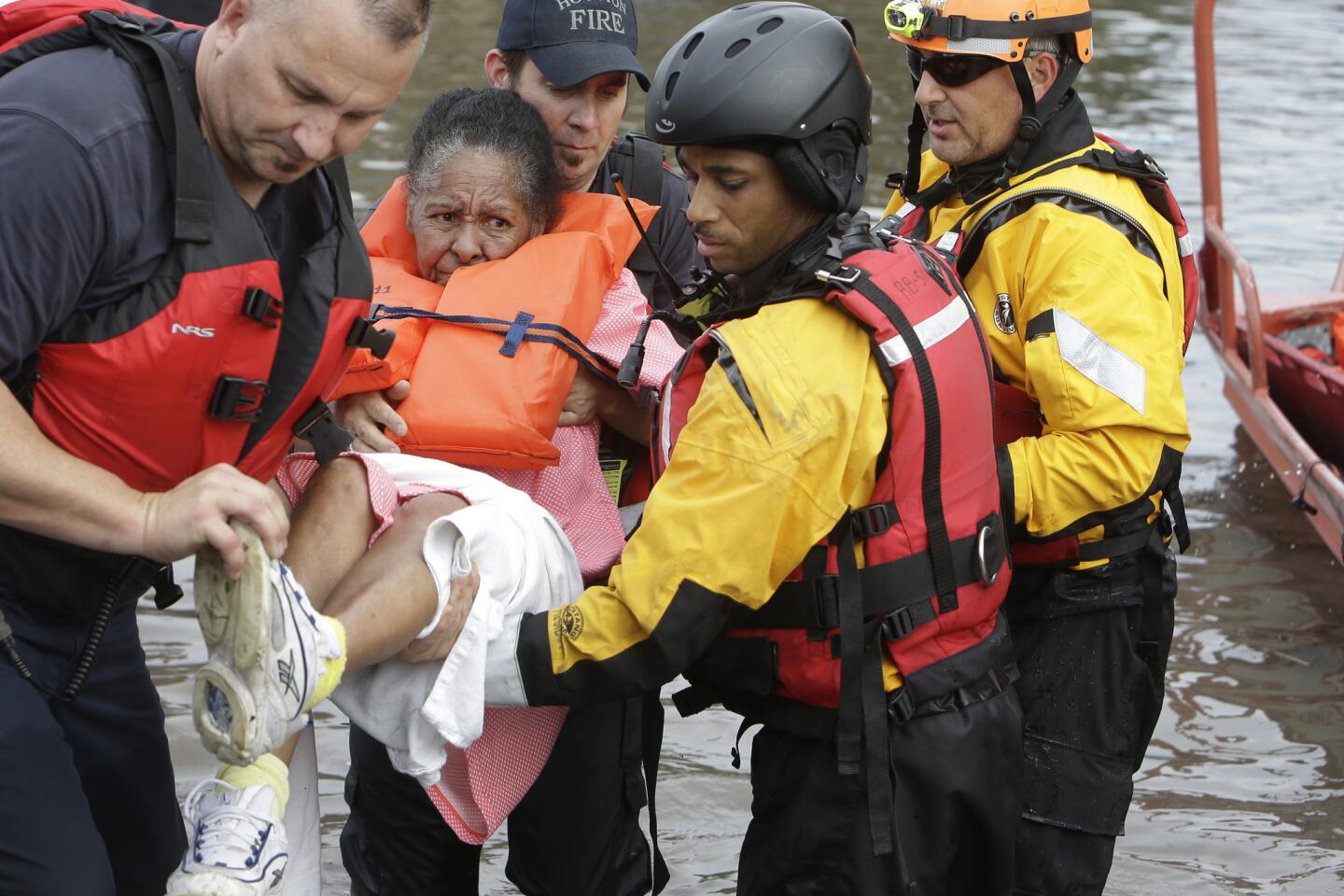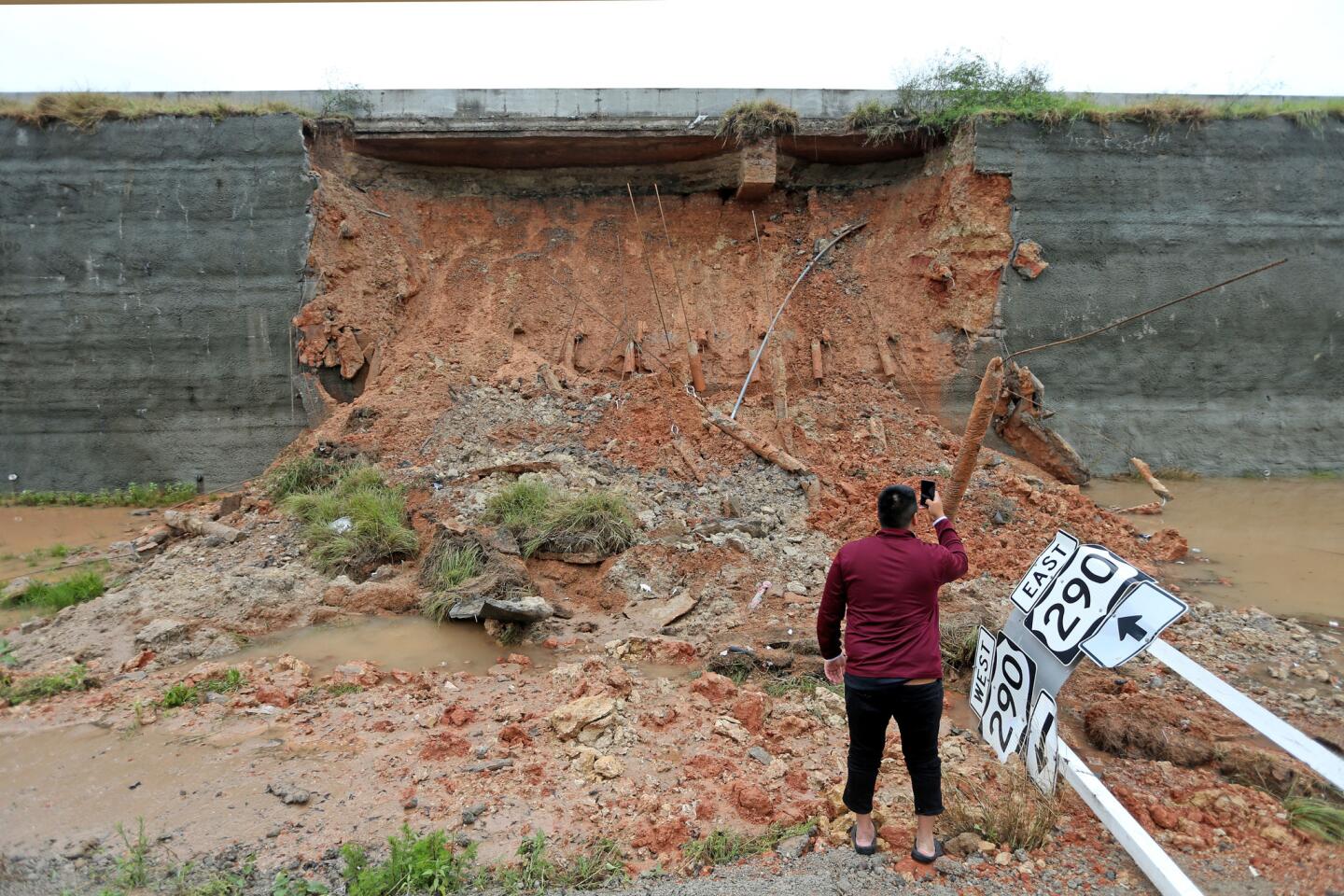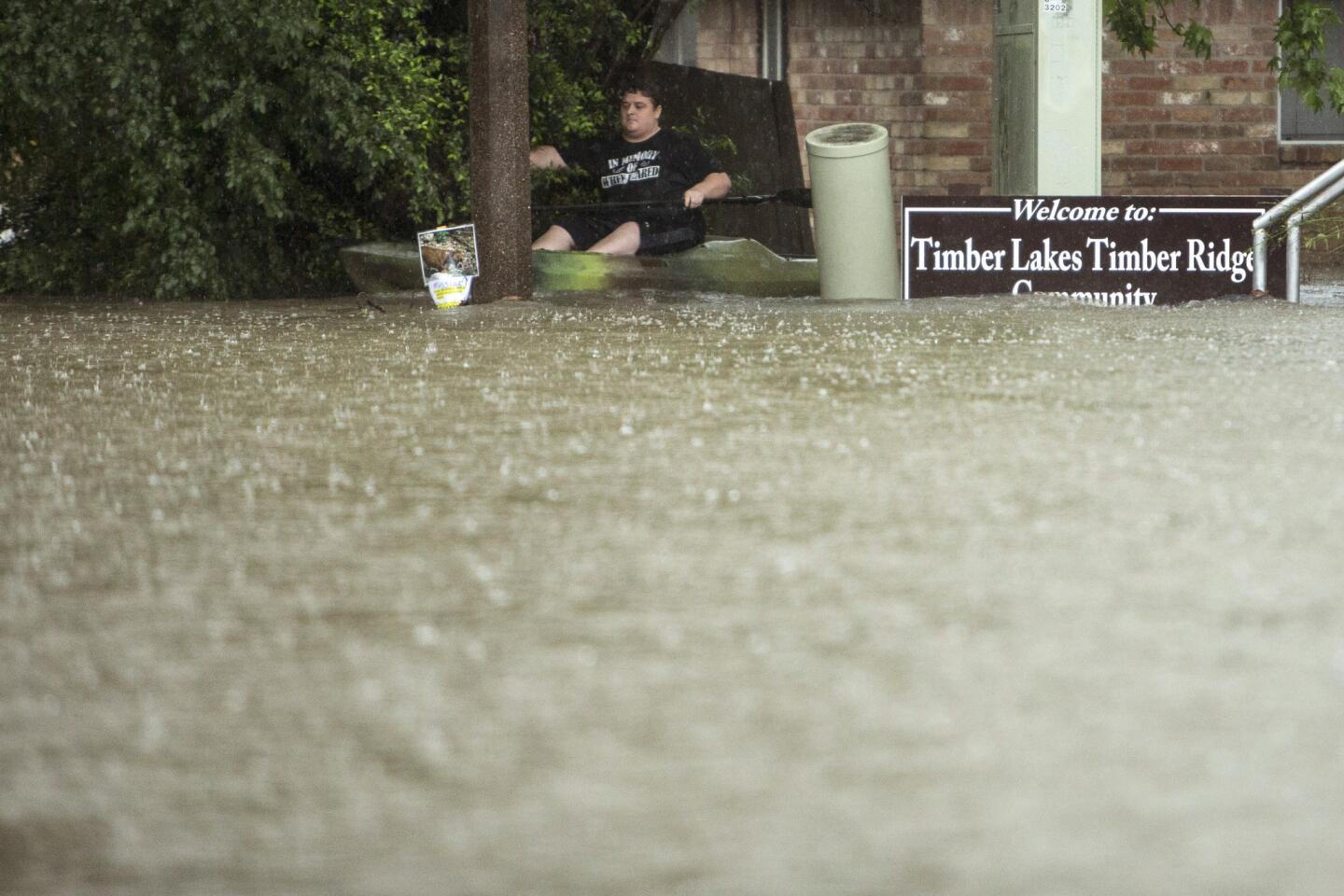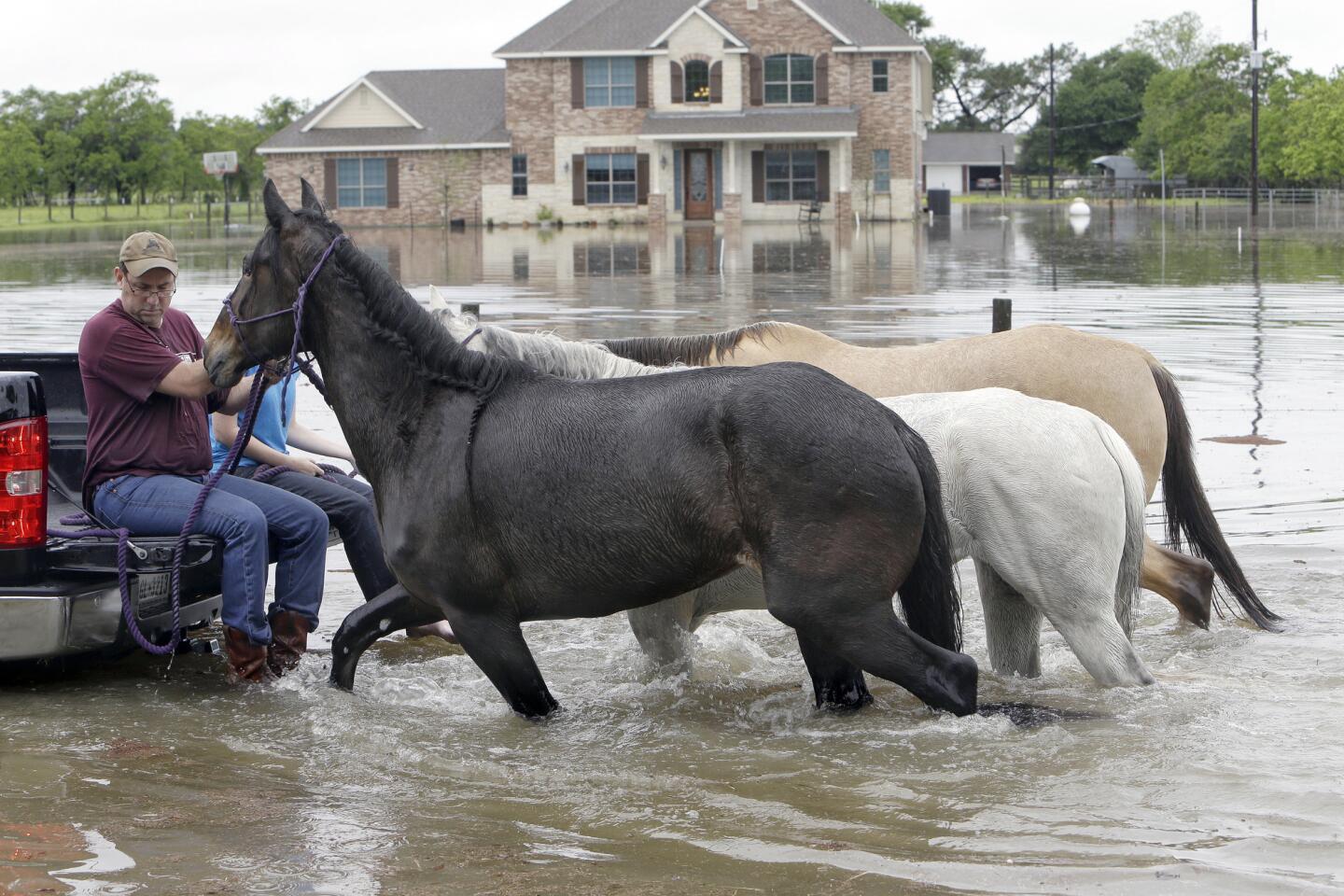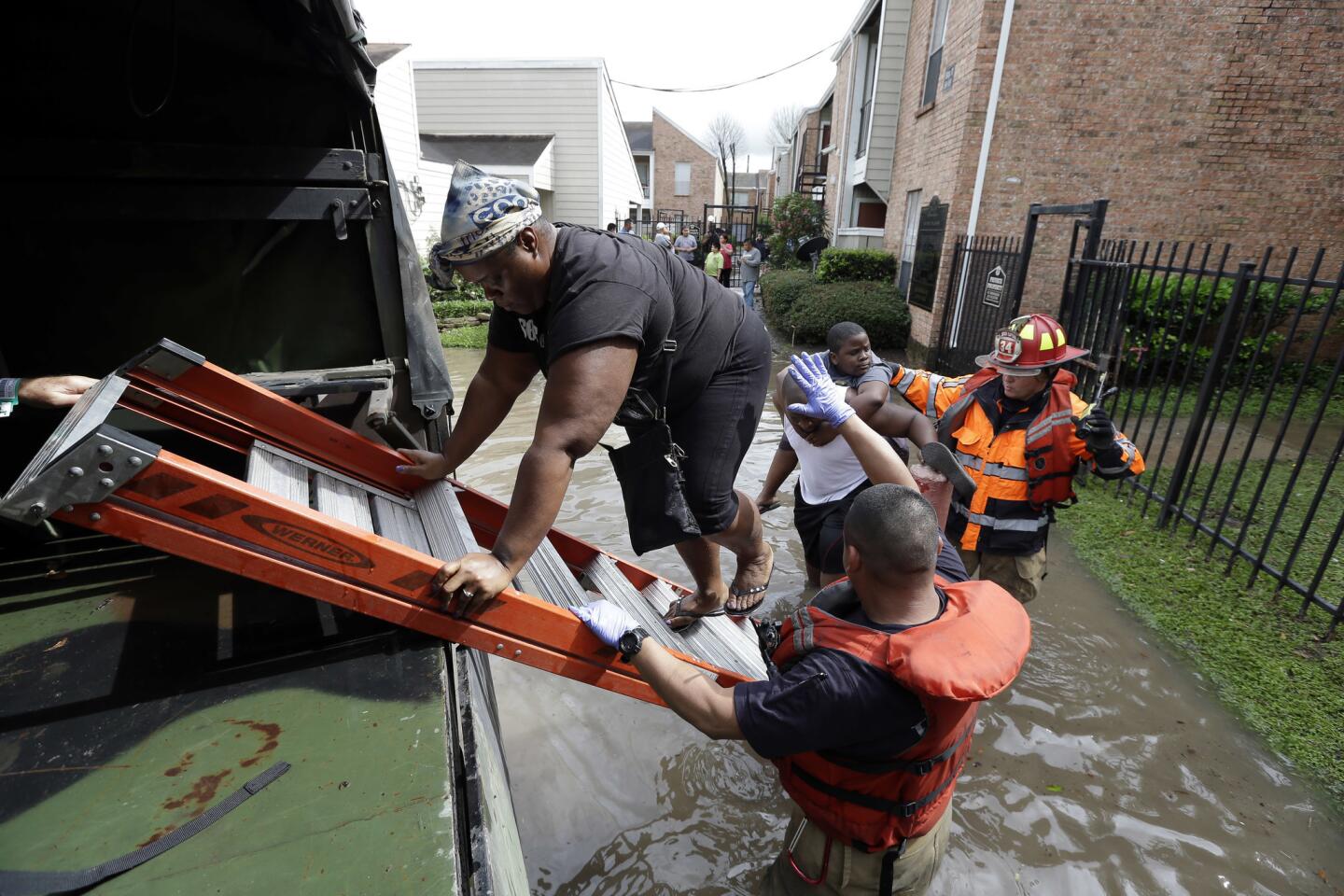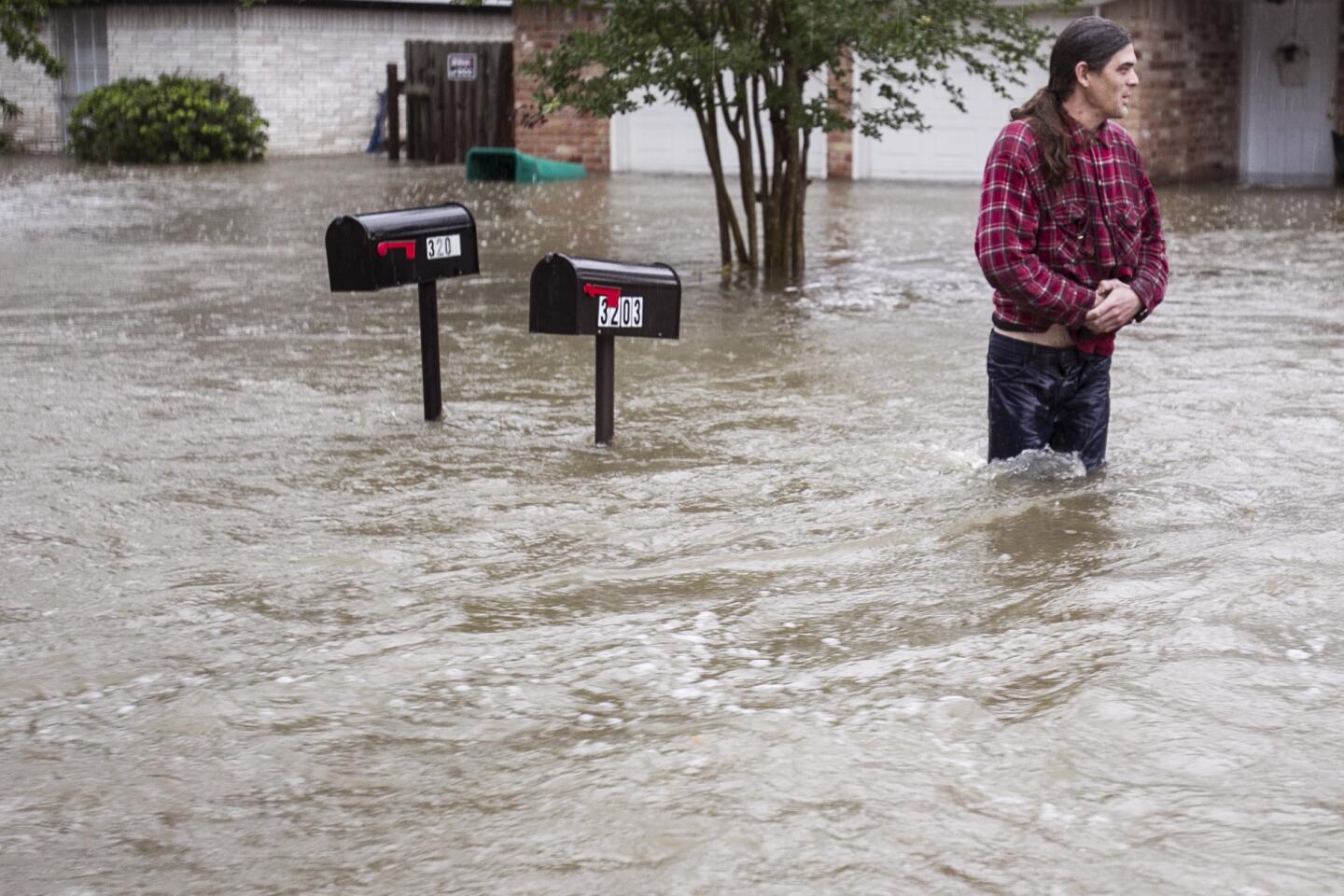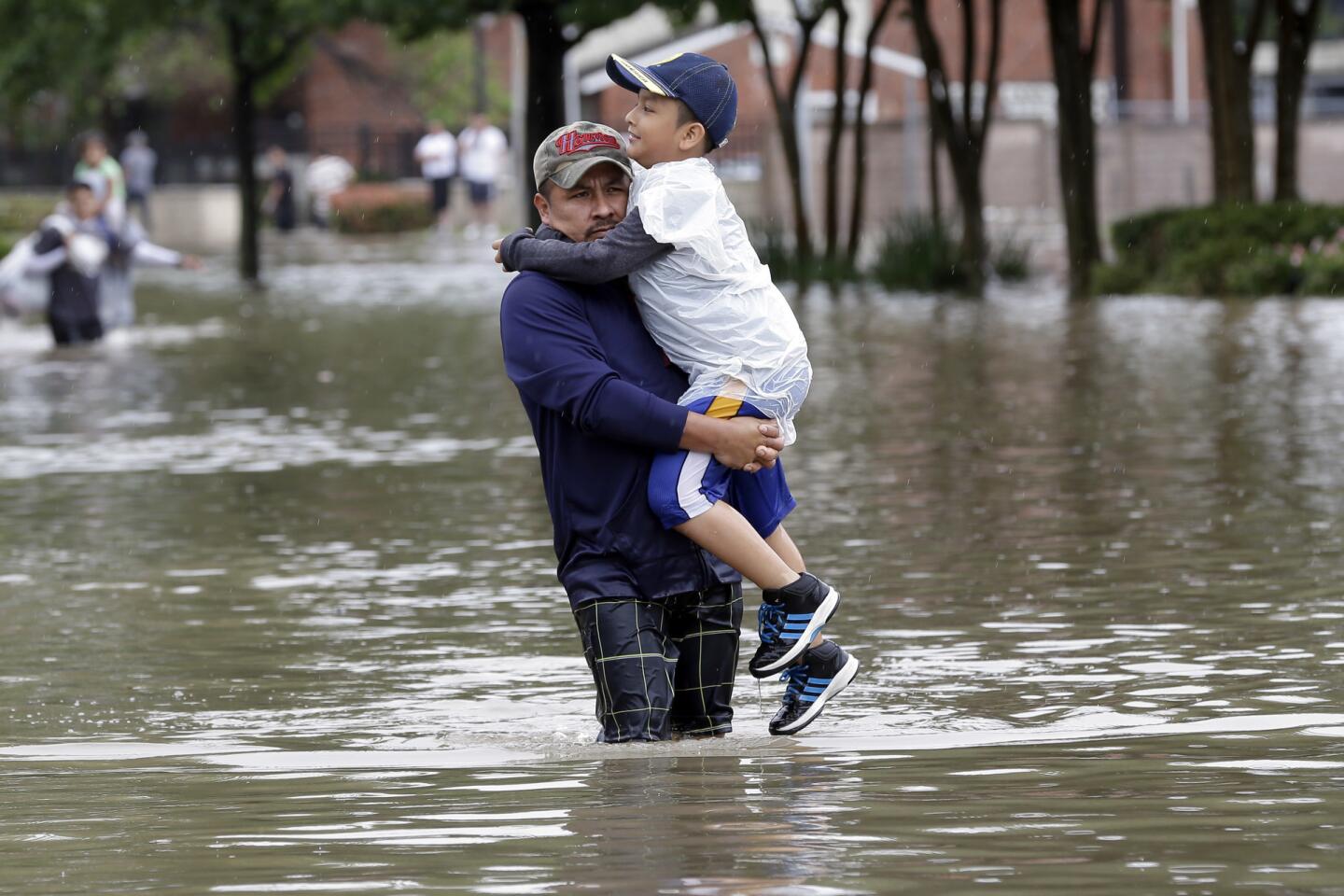5 dead, thousands without power as Houston flooding continues
- Share via
reporting from houston — As more than a foot of rain deluged the nation’s fourth-largest city, inundating homes, shutting down major highways and leaving at least five people dead, Houston’s mayor said there was no immediate solution.
Heavy flooding has become nearly an annual rite of passage in the practically sea-level city, where experts have long warned of the potential for catastrophe.
“I regret anyone whose home is flooded again,” said Sylvester Turner, the city’s mayor, on Monday. “There’s nothing I can say that’s going to ease your frustration. We certainly can’t control the weather.”
“A lot of rain coming in a very short period of time, there’s nothing you can do,” he added.
NEWSLETTER: Get the day’s top headlines from Times Editor Davan Maharaj >>
Flash flooding and more rain are possible Tuesday, a day after some areas saw water levels approaching 20 inches. Scores of subdivisions flooded, schools were closed, and power was knocked out to thousands of residents who were urged to shelter in place.
In addition to its location, Houston’s “gumbo” soft soil, fast-growing population and building boom that has turned empty pastures into housing developments all over the city’s suburbs and exurbs make it vulnerable to high waters, experts say.
Harris County, where Houston and many of its suburbs are located, has seen a 30% jump in population since 2000. Its surrounding counties have grown almost more than 10% since 2000, according to the Greater Houston Partnership, a business group.
Some of the resulting developments include adequate greenspace for water runoff, but not all of them do, said Philip Bedient, an engineering professor at Rice University.
See more of our top stories on Facebook >>
“Could we have engineered our way out of this?” Bedient said. “Only if we started talking about alterations 35 or 40 years ago.”
Samuel Brody, director of the Environmental Planning & Sustainability Research Unit at Texas A&M University, last year called Houston “the No. 1 city in America to be injured and die in a flood.”
Rainstorms last year over Memorial Day weekend caused major flooding that required authorities to rescue 20 people, most of them drivers, from high water. Drivers abandoned at least 2,500 vehicles, and more than 1,000 homes were damaged in the rain.
The year before, flash flooding in Houston and suburban counties left cars trapped on major highways.
Those storms still pale in comparison to the devastation wreaked by Hurricane Ike in 2008 and Tropical Storm Allison in 2001. Allison left behind $5 billion in damage and flooded parts of downtown and the Texas Medical Center, which sits near the Brays Bayou, a key watershed.
Bedient has worked with the Texas Medical Center on better preparing its facilities for massive rainfall, including the use of a sophisticated weather alert system that gives the medical center extra time to activate gates and doors that block excess rainwater.
Improving the monitoring of specific watersheds and flood-prone areas might give affected residents the extra bit of time they need to save lives and take protective measures.
“We can’t solve this flood problem in Houston,” Bedient said. “All we can do is a better job warning.”
ALSO
Tennessee’s governor vetoes Bible as state book
The wild schemes people will use to commit tax fraud
Outside Supreme Court, many Californians share their immigrant stories
More to Read
Sign up for Essential California
The most important California stories and recommendations in your inbox every morning.
You may occasionally receive promotional content from the Los Angeles Times.
